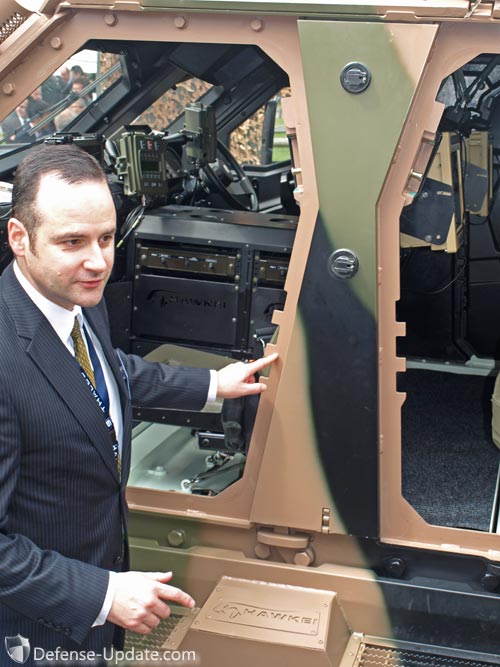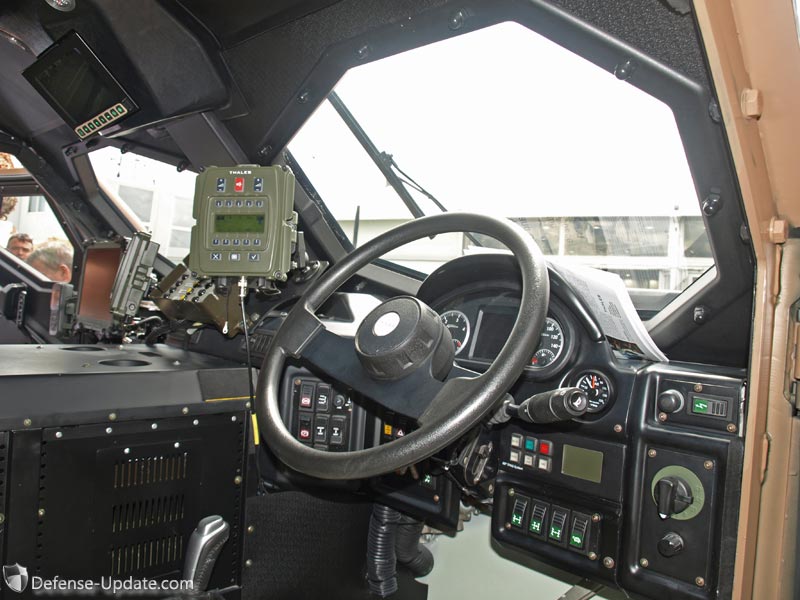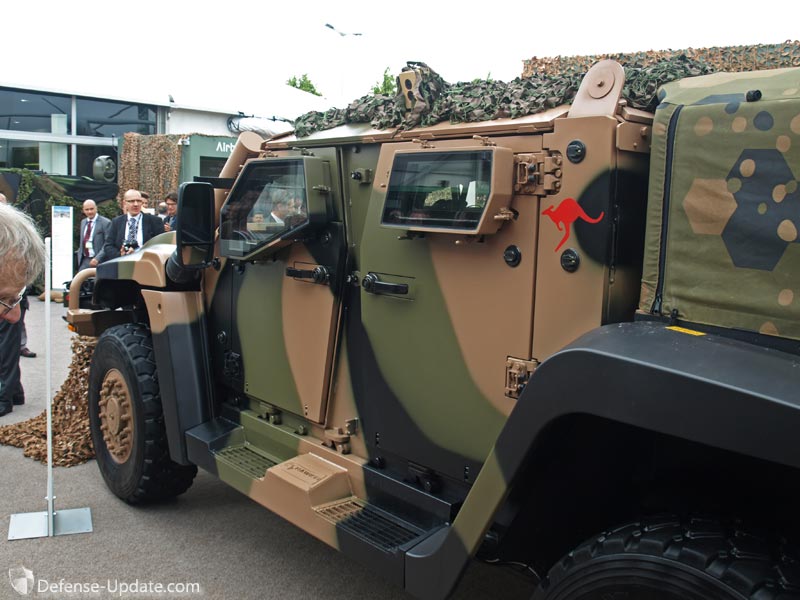Thales Australia is displaying at Eurosatory the latest version of the Hawkei , selected by the Australian defense for the LAND 121 Phase 4 program. Earlier this month the Australian MOD allocated over $38 million for further development and testing of the new vehicle. Thales is currently contracted to deliver six prototype vehicles for testing within 15 months. The first vehicle will be delivered later in 2012. Through 2013 these prototypes will undergo a range of testing and evaluation including user assessments, capability and reliability testing to evaluate the ability of the vehicle to deliver the capability required by the Australian troops. Following these tests the prime contractor will also have to meet technical and cost criteria. The Australian government will decide on the procurement of up to 1,300 such vehicles in the forthcoming second phase, expected in 2015.

According to Thales Australia CEO Chris Jenkins, the Hawkeye at seven ton weight will deliver a protection level equivalent to that of the much heavier Bushmaster, while deliver payloads of 1.8 tonns. At this weight level (Seven tons without applique armor) the Hawkei can be delivered by air with Chinook helicopter. The crew can then install the B-Kit add-on armor within 30 minutes, without the need for special tools, as each of the applique armor components is designed to be carried by one or two soldiers. Overall the vehicle is designed for a Gross vehicle weight of up to ten tons although some adaptations will be required to meet these weight levels.
This straightforward and effective approach has been developed with Plasan, the protection system designer and integrator for Hawkei. Boeing Defence Australia is also part of the team, providing overall vehicle through life support.
According to Paul Harris, Director of strategy, sales and marketing at Thales Australia, unique dimension of the Hawkei protection architecture is its ‘shallow V hull’, enabling the vehicle to maintain a high level of mine and IED protection without increasing the height of the floor. He also mentioned the applique armor architecture enables the vehicle to adapt to evolving threats with new armor technology.
According to Harris, modularity has been implemented throughout the design. For example, the bolted steel hull can be modified if necessary, to adapt for new configurations; the drive train is compartmentalized entirely from the firewall forward, eliminating the channel that usually contains the driveshaft and exhaust pipe. Inside, the cabin floor is flat, there is no driveshaft protruding the floor, leaving ample cabin space to seat three fully equipped soldiers at the back and two at the front.

The crewmembers have individual multipurpose screens that link to all the vehicle’s systems and sensors, including new ones that may come along in the future, including radios, command and control (BMS), weapon control and recon sensors. This architecture simplifies the integration of new systems on board. Thales plans to integrate a Health and Usage Monitoring Systems (HUMS) driven through the individual touch screens, displaying the vehicle’s performance, engine, electrical supply, power management, weapons and sensors for the crew and maintenance operators.

This article is included in the special daily edition available for download in PDF format before the show. The full edition of Eurosatory Show Live is available for only 4.95 Euros before the show. We recommend you download it and keep it accessible throughout the show on your mobile phone.




















